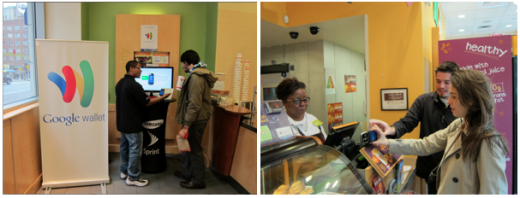Samsung's Galaxy Nexus was unveiled last week to much fanfare, and when you take a look at the device it's easy to be impressed. With its vanilla Ice Cream Sandwich (pun not intended) OS and slim futuristic looks it's a smartphone that begs to please.
But beneath all of its good looks and groundbreaking software how does it function? What does it offer that other devices do not? In order to find out we've put the new Galaxy Nexus up against the newly launched Galaxy Note – a 5.3-inch display smartphone/tablet hybrid.
Display
Samsung's Galaxy Nexus features a 4.6-inch Super AMOLED touchscreen that operates at a resolution 720x1280 and offers an incredible pixel density of 316PPI, just a few small blobs short of Apple's iPhone 4S and its pretentiously named Retina Display.
The Galaxy Note, on the other hand, features a whopper of a Super AMOLED display, measuring 5.3-inches and display 800x1280 pixels, with a pixel density of 285PPI.
It's hard to fault Samsung for its choices with either device in this category and fault them we shan't. Both these devices have fantastic, responsive, vivid displays that are tough as old boots thanks to their Gorilla Glass coating.
We would be happy watching either of them every day.
Winner - Draw
Form & Build
Samsung Galaxy Nexus - 135.5 x 67.9 x 8.9 mm, 135 g
Samsung Galaxy Note - 146.9 x 83 x 9.7 mm, 178 g
With its 5.3-inch screen the Galaxy Note isn't exactly pocket-ready, but the device is certainly crafted well enough. The use of plastics adds a bit of a sour note (we'd like to see some metal now and again, Samsung) but overall the device feels solid and durable.
The Galaxy Nexus undoubtedly looks and feels more premium than the Note, though. It's crafted from almost identical materials. The design exudes a far more professional vibe too, which isn't something to be sniffed at.
The device is also smaller, lighter and 100% more pocketable than the Note too, giving it this round.
Winner - Samsung Galaxy Nexus
Camera
Samsung's smartphone camera's are coming on in leaps and bounds and the Galaxy Note's 8-megapixel offering is no exception.
It features LED flash, autofocus, geo-tagging, touch focus, face and smile detection, image stabilisation and 1080P video capture. It'll allow users to snap a more than printable image on the spur of the moment.
A secondary camera is offered too and the 2-megapixel effort, which can also be found on the Galaxy S 2, is far and away the best video-call camera we've used.
Mystifyingly the Galaxy Nexus only has a 5-megapixel primary camera, but what it lacks in pixel count it more than makes up for in software enhancements and performance.
Samsung and Google have got together to ensure that the Galaxy Nexus' primary camera has no shutter lag at all, meaning you get to shoot what you see, not what you saw 3 seconds ago. It's a feature that we hope becomes the norm for other manufacturers too.
In addition to this the camera benefits from an LED flash, touch focus, geo-tagging and face-detection, and as with the Galaxy Note, 1080P video capture.
The secondary camera is a mere 1.3-megapixels but it will ably serve its purpose.
Winner - Draw
Software
The Galaxy Nexus will ship with the latest version of Android, Ice Cream Sandwich, and this iteration of the OS represents a shift in strategy for Google.
No more custom UI's, no more putting off updates. From here on in what happens to the OS is dictated by Google and that is a decision we are stoked about.
On the practical side this updated operating system is fast, stable and has been richly re-designed to compete with the advances of its competitors. You can expect to see a new font throughout, face recognition, improved core apps and a whole new UI. It's very impressive.
Samsung's Galaxy Note ships with version 2.3 of Google which, while impressive and practical, isn't going to win any contests against the new version of the software.
Yes, you'll still have access to the same myriad of applications from the Android Market. Yes you can still customise, but overall the introduction of Ice Cream Sandwich largely makes previous iterations seem like release candidates.
Samsung's TouchWiz 4.0 overlay does add to the charm of the Galaxy Note though, with custom eye-candy, hubs for social integration, books and games, and custom widgets and apps, but it's a small victory when held up against the future of the platform.
Winner - Samsung Galaxy Nexus
Power
Samsung's Galaxy Nexus is powered by a dual-core 1.2GHz Cortex-A9 CPU which is more than powerful enough for even the most testing tasks, and the running gear is ably assisted by 1GB RAM, which will make slipping in and out of applications seamless.
The Galaxy Note weighs-in even heavier in the guts department though, with a dual-core 1.4GHz Cortex-A9 and Mali-400MP GPU, which affords the user just a smidge more poke when they're in a pinch.
The Galaxy Note also features 1GB RAM, and this fact pushes it up there just beyond the reach of the Galaxy Nexus, giving it a win in this round.
Winner - Samsung Galaxy Note
The mighty Samsung Galaxy Nexus has taken the win, but only by a whisker!
It's a device that offers a glimpse at the future of the Android world, and performs ably across the board but, as with its two forebears, it doesn't really push the envelope in any way shape or form.
The Galaxy Note is to the device what the HTC Desire was the Nexus One, which is to say a superior specimen all but for a few small points (which can be altered by the end-user should they be so intrepid), and as such it's a device which deserves some respect.







 10:39 PM
10:39 PM
 Simranpal SIngh
Simranpal SIngh


















